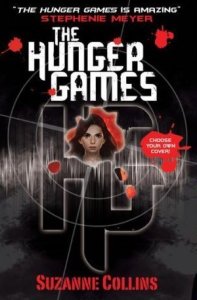How are voice and character developed when a character is alone in the wilderness, with no one else to bounce off, and no hubbub of everyday life?
In my novel in progress, my impetuous, arrogant, demanding, unpredictable, prickly protagonist Rosa finds allies in the women, holds her own with the men and causes plenty of conflict in any scene she is in – except when she’s on her own.
And this is a bit of a problem, because in the first few chapters she is alone on the moor, running away, recovering from a traumatic experience and surviving alone in the wilds.
So now I am gobbling up books with solitary protagonists in a survivalist setting, to see how they accomplish it.
My Side of the Mountain by Jean George is about a boy who runs away from home and lives in the woods in the Catskill Mountains.

Narrated in first person past tense, Sam’s narration suggests he is talking straight to the reader, as he reflects on his own early incompetence, and advises us about camp craft techniques. He tells us what he was thinking, using tags. There are animals in Sam’s wood, and he trains a falcon so there is continually ‘someone’ to speak to, although he does this sparingly. Similarly he speaks aloud to other wild animals he befriends. He also talks aloud to himself occasionally, and he does meet a few humans and have brief dialogue with them.
Pollard by Laura Beatty is the story of a ‘woman of the road’ who left home at 15 to live permanently in the woods.

It is written in close third person and Anne’s voice is strong and characterful from the outset. Her thoughts and feelings are woven into the text, as is dialogue, which has no speech marks and contributes to her stream of consciousness. This is cleverly done, because it conveys her bafflement with the world and her family. In the early chapters she has some interaction with her family, which allows us to hear her voice and see her character.
In The Road by Cormac McCarthy, a father and son walk across post-apocalyptic America.

It is not strictly a solitary protagonist because ‘the man’ is with his son, but I have included it because there is a feeling of isolation throughout. There is no apparent distinction in voice between when he is with his son, and when he goes off alone or his son is asleep. McCarthy writes in close third person, past tense. His internal dialogue intermingles with description, interpretation of the environment and with dialogue. Like in Pollard, there are no speech marks. In this case it portrays his despair, the futility, as if identity is no longer a thing.
In the The Hunger Games by Suzanne Collins, protagonist Katniss is a ‘tribute’ in the Hunger Games, a fight to the death reality TV show.

She participates alone, although sometimes interacts with other characters. Written in first person present tense, it has immediacy . We are with Katniss’s thoughts throughout, and like Anne’s and ‘the man’s’ it comes across as a stream of consciousness. In one passage she can tell us what she is doing, how she is feeling emotionally, what a voice in the back of her head is saying, theories about other people’s motives and what she is feeling physically. In this way she has an ongoing and seamless dialogue with herself and with us, although she also states some thoughts expressly, in italics, and tagged, as if talking to herself.
In Julius Winsome by Gerard Donovan, Julius lives alone in a cabin in the woods, and seeks revenge on the person who shot his dog.

In the first three chapters the protagonist is alone. His dog has disappeared. He spends much of this time on exposition, telling us the backstory of his cabin, his reading matter and his parents. This tells us little about his character and demonstrates no voice – unless we are to assume he is a bit of a bore. It doesn’t seem part of the story.
So, what have I learnt to help me with The Scottish Exiles? My current draft was in first person, past tense. Having tried all four combinations, and noting the variety in these titles, I am not convinced that either narrative viewpoint or tense have a conclusive bearing on the voice and character of a solitary protagonist in a survival situation. However, the immediacy of The Hunger Games is compelling so I have rewritten in present tense.
This immediacy I want to portray rules out the ‘reporting later’ style in My Side of the Mountain. I have considered starting the story later and having Rosa tell this part of her tale to male protagonist Davey, but I would I lose the opportunity to establish the moorland setting and the dystopian world at the start of the book. Although I am not tempted to have Rosa spending her first few scenes on exposition about her family and what she likes to read, the present tense makes it easier to move smoothly to the past for a contextual backstory chapter.
Rosa’s thoughts were expressed directly, with distinctly worded thoughts in italics, but without tags because I don’t want to create a ‘looking back’ sort of distance. Following this exercise, I have removed the italics. Rosa’s consciousness of her immediate surroundings, her plight and her memories are intended to be intermingled, and Anne’s in Pollard and ‘the man’s in The Road, each conveying a slight madness or desperation, are nearest to how I want Rosa to be.

